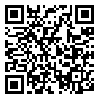Volume 20, Issue 1 (6-2022)
sjsph 2022, 20(1): 81-96 |
Back to browse issues page
Download citation:
BibTeX | RIS | EndNote | Medlars | ProCite | Reference Manager | RefWorks
Send citation to:



BibTeX | RIS | EndNote | Medlars | ProCite | Reference Manager | RefWorks
Send citation to:
Validabady Z, lotfi M. The Needs of Self-Care and Community Mental Health Education. sjsph 2022; 20 (1) :81-96
URL: http://sjsph.tums.ac.ir/article-1-6111-en.html
URL: http://sjsph.tums.ac.ir/article-1-6111-en.html
1- 1- MSc. Student, Department of Mental Health, School of Behavioural Sciences and Mental Health, Iran University of Medical Sciences, Tehran, Iran
2- 2- Ph.D. Assistant Professor, Department of Mental Health, School of Behavioural Sciences and Mental Health, Iran University of Medical Sciences, Tehran, Iran
2- 2- Ph.D. Assistant Professor, Department of Mental Health, School of Behavioural Sciences and Mental Health, Iran University of Medical Sciences, Tehran, Iran
Abstract: (1700 Views)
Background and Aim: Among the valuable developments in the primary health care system has been the special attention paid to the issue of mental health and the addition of a self-care program for community mental health education. However, no integrated measures have been taken in relation to the needs of service recipients, educational priorities and the required facilities. This study was conducted to explain the priorities of this program in primary health care centers affiliated to Iran University of Medical Sciences, Tehran, Iran.
Materials and Methods: This was a qualitative study with a content analysis approach. The sample consisted of 12 stakeholders selected by purposive sampling with maximum diversity. Data were collected through in-depth and semi-structured interviews and a modified checklist of the Community Health Needs Assessment Program and analyzed using the Granheim and Landman approach.
Results: Based on data analysis, the needs were grouped into two main categories, namely, the needs of service providers and the needs of service recipients. The service providers’ needs included continuous coordination with non-health sectors, a virtual education and information system and continuous training and educational supervision, as well as appropriate space, facilities and equipment, while the of needs of service recipients were classified based on services needed for age groups, namely, services for children, adolescents and young people, adult and middle-aged, elderly and others.
Conclusion: Identifying needs can lead to the optimal use of limited resources aiming at imparting applied education and training. The results of this research can be an effective step towards expansion based on the needs for mental health education and a great help in achieving the goals of this program in primary health care centers. Based on the results it is recommended to plan personnel training and revise the services based on the identified needs in order to increase the effectiveness of this program.
Materials and Methods: This was a qualitative study with a content analysis approach. The sample consisted of 12 stakeholders selected by purposive sampling with maximum diversity. Data were collected through in-depth and semi-structured interviews and a modified checklist of the Community Health Needs Assessment Program and analyzed using the Granheim and Landman approach.
Results: Based on data analysis, the needs were grouped into two main categories, namely, the needs of service providers and the needs of service recipients. The service providers’ needs included continuous coordination with non-health sectors, a virtual education and information system and continuous training and educational supervision, as well as appropriate space, facilities and equipment, while the of needs of service recipients were classified based on services needed for age groups, namely, services for children, adolescents and young people, adult and middle-aged, elderly and others.
Conclusion: Identifying needs can lead to the optimal use of limited resources aiming at imparting applied education and training. The results of this research can be an effective step towards expansion based on the needs for mental health education and a great help in achieving the goals of this program in primary health care centers. Based on the results it is recommended to plan personnel training and revise the services based on the identified needs in order to increase the effectiveness of this program.
Type of Study: Research |
Subject:
Public Health
Received: 2022/09/7 | Accepted: 2022/06/21 | Published: 2022/06/21
Received: 2022/09/7 | Accepted: 2022/06/21 | Published: 2022/06/21
| Rights and permissions | |
 |
This work is licensed under a Creative Commons Attribution-NonCommercial 4.0 International License. |





